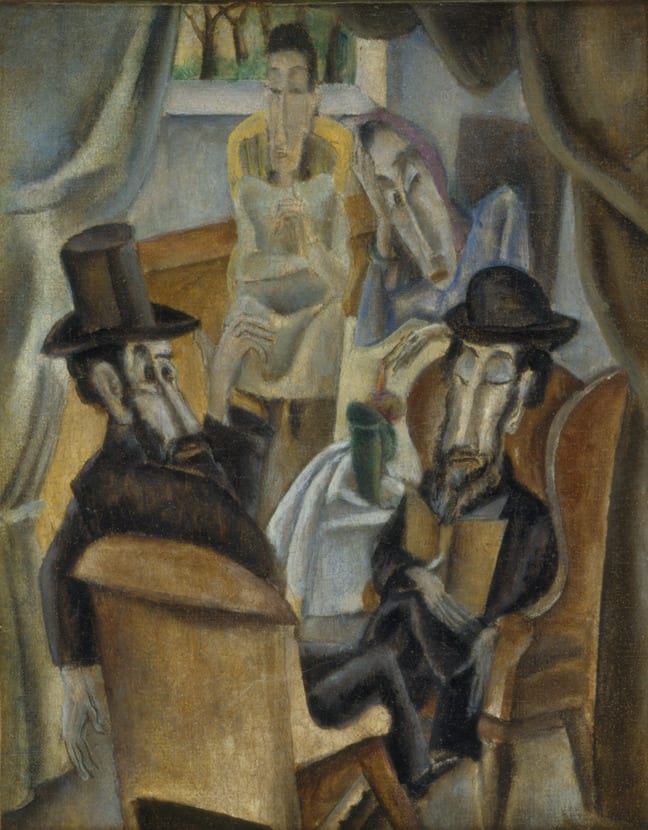
Max Weber was one of the first American modernists and one of the few avant-garde artists to include religious subjects in his work. Emigrating with his Orthodox family from Bialystok, Russia, to Williamsburg, Brooklyn, at the age of ten, Weber studied art at the Pratt Institute under Arthur Wesley Dow (1857-1922) and taught art classes in Virginia and Minnesota before heading to Europe in 1905 to continue his artistic training. In Paris, Weber met several leaders of the avant-garde, including collectors Leo and Gertrude Stein and artists Henri Matisse, Pablo Picasso, and Henri Rousseau. In addition, he saw works by Paul Cezanne and the Fauves at the Salon d'Automne and was exposed to the Japanese prints, African sculpture, and pre-Columbian imagery that greatly influenced the direction of modern art in the early twentieth century.
Returning to New York in 1909, Weber brought with him works by Europe's leading artists, including Matisse, with whom he studied in Paris, and Picasso, whose Cubist influence made a significant impact on Weber's work. Considered the first American to work in a Cubist style, Weber gained recognition from important American artists such as Arthur B. Davies and had a one-person exhibition of drawings and paintings at Alfred Stieglitz's influential 291 gallery in 1911. His fractured, multiple-viewpoint images of contemporary urban subjects-such as the newly constructed Grand Central Terminal-met with criticism from the public but praise from within the artistic community.
Weber began to explore spiritual and religious themes in his work around 1917. A few years later, he became actively involved with a group of Yiddish writers called Di Yunge, contributing woodcuts, essays, and poems to their journal. Sabbath is one of Weber's early religious paintings that link a modern Cubist vocabulary with a traditional Judaic theme. The simplified, angular forms create a dynamic setting for a scholarly Sabbath discussion. While the two men in the foreground with their figures, the women in the background would be as much at home in a bohemian salon as in a religious milieu. Weber's introduction of contemporary figures and an avant-garde style into a traditional religious theme offers a rarely seen modernist approach to Jewish imagery.
Returning to New York in 1909, Weber brought with him works by Europe's leading artists, including Matisse, with whom he studied in Paris, and Picasso, whose Cubist influence made a significant impact on Weber's work. Considered the first American to work in a Cubist style, Weber gained recognition from important American artists such as Arthur B. Davies and had a one-person exhibition of drawings and paintings at Alfred Stieglitz's influential 291 gallery in 1911. His fractured, multiple-viewpoint images of contemporary urban subjects-such as the newly constructed Grand Central Terminal-met with criticism from the public but praise from within the artistic community.
Weber began to explore spiritual and religious themes in his work around 1917. A few years later, he became actively involved with a group of Yiddish writers called Di Yunge, contributing woodcuts, essays, and poems to their journal. Sabbath is one of Weber's early religious paintings that link a modern Cubist vocabulary with a traditional Judaic theme. The simplified, angular forms create a dynamic setting for a scholarly Sabbath discussion. While the two men in the foreground with their figures, the women in the background would be as much at home in a bohemian salon as in a religious milieu. Weber's introduction of contemporary figures and an avant-garde style into a traditional religious theme offers a rarely seen modernist approach to Jewish imagery.
Information may change as a result of ongoing research.